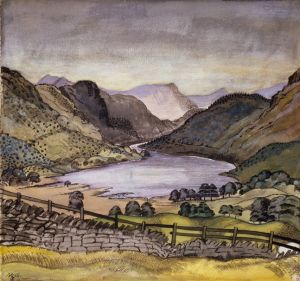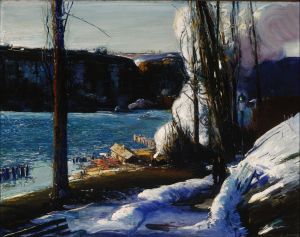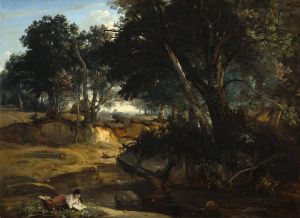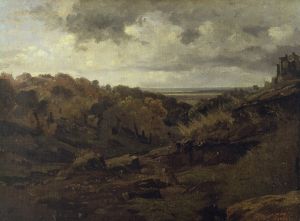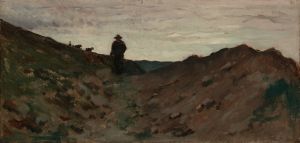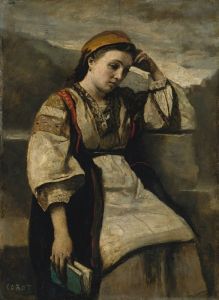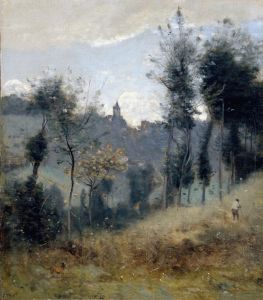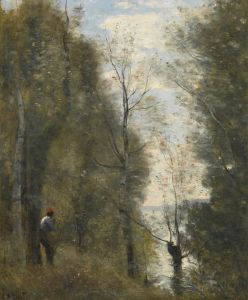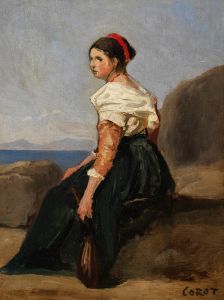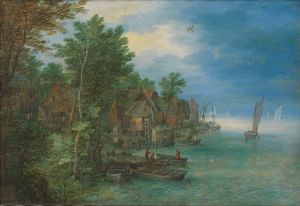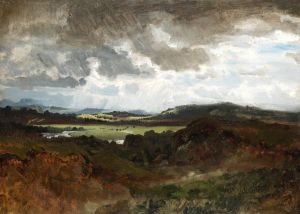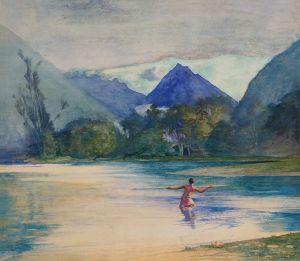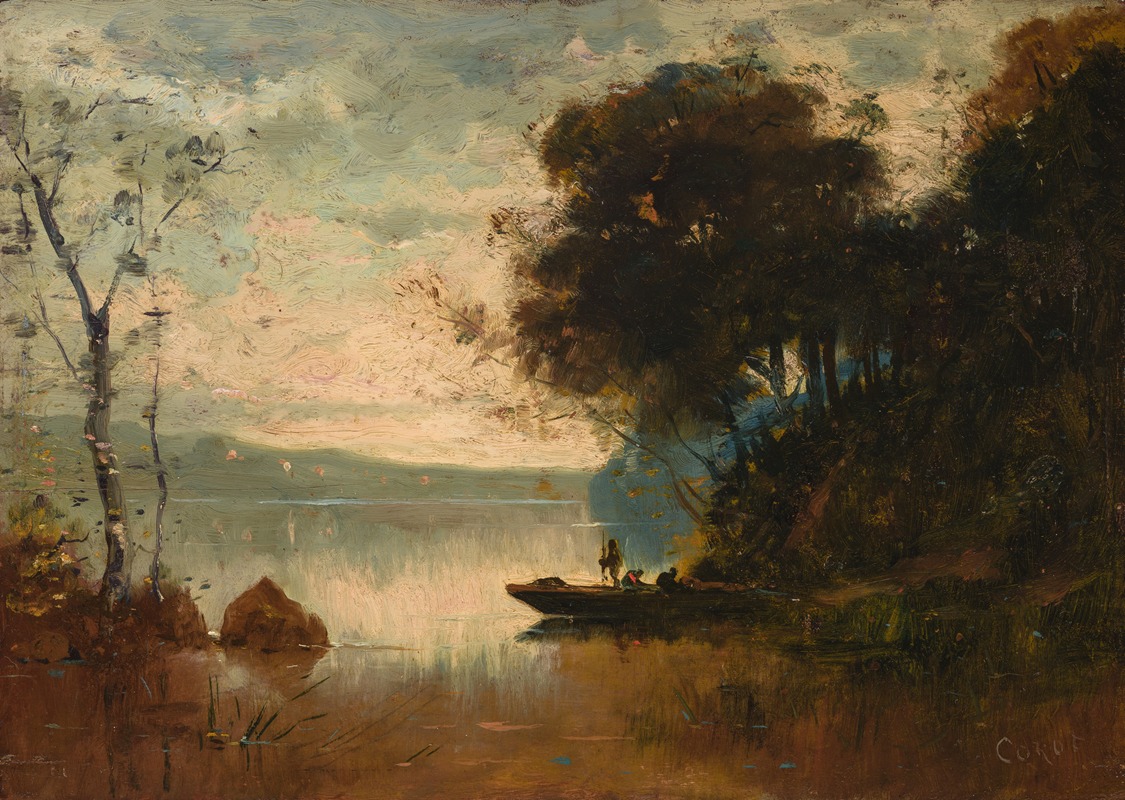
The Memory of Riva
A hand-painted replica of Jean-Baptiste-Camille Corot’s masterpiece The Memory of Riva, meticulously crafted by professional artists to capture the true essence of the original. Each piece is created with museum-quality canvas and rare mineral pigments, carefully painted by experienced artists with delicate brushstrokes and rich, layered colors to perfectly recreate the texture of the original artwork. Unlike machine-printed reproductions, this hand-painted version brings the painting to life, infused with the artist’s emotions and skill in every stroke. Whether for personal collection or home decoration, it instantly elevates the artistic atmosphere of any space.
Jean-Baptiste-Camille Corot, a pivotal figure in landscape painting, created "The Memory of Riva" during the 19th century. Corot, born in Paris in 1796, is renowned for his contributions to the Barbizon School and his influence on the Impressionists. His work often bridges the gap between the Neoclassical tradition and the emerging Impressionist movement, characterized by a focus on light and atmosphere.
"The Memory of Riva" is a testament to Corot's ability to capture the essence of a place through his unique style. While specific details about the painting's creation date and its current location are not widely documented, it is known that Corot traveled extensively throughout Europe, including Italy, which profoundly influenced his work. His visits to Italy, particularly the countryside and small towns, provided him with a wealth of inspiration, and Riva, a picturesque town on the shores of Lake Garda, likely served as a muse for this piece.
Corot's landscapes are celebrated for their poetic quality, often evoking a sense of tranquility and timelessness. In "The Memory of Riva," Corot employs his characteristic soft brushwork and a muted color palette to create a serene and atmospheric scene. His technique often involved the use of thin layers of paint to build up a luminous effect, capturing the subtle interplay of light and shadow. This approach allows viewers to experience the landscape as if it were a fleeting memory, aligning with the painting's title.
Corot's influence on later artists, particularly the Impressionists, is significant. His emphasis on capturing the transient effects of light and his departure from the rigid structures of academic painting paved the way for artists like Claude Monet and Camille Pissarro. Corot's work, including "The Memory of Riva," demonstrates a shift towards a more personal and emotive representation of nature, focusing on mood and atmosphere rather than precise topographical details.
Throughout his career, Corot maintained a balance between his studio work and plein air painting, often completing sketches outdoors and refining them in his studio. This method allowed him to infuse his landscapes with both immediacy and contemplation. "The Memory of Riva" likely reflects this dual approach, combining on-site observation with a reflective interpretation of the scene.
While "The Memory of Riva" may not be as widely recognized as some of Corot's other works, it embodies the qualities that make his art enduringly appealing. The painting invites viewers to engage with the landscape on an emotional level, offering a glimpse into Corot's artistic vision and his ability to transform a simple view into a profound visual experience.
In summary, "The Memory of Riva" by Jean-Baptiste-Camille Corot is a notable example of the artist's landscape painting, reflecting his travels and his innovative approach to capturing the essence of nature. Through his delicate brushwork and atmospheric compositions, Corot continues to be celebrated as a master of landscape art, influencing generations of artists who followed.





